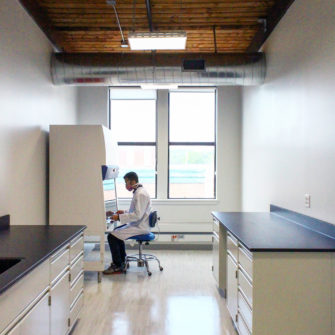Physicists are proud to call their field the “mother of the sciences,” and based upon our recent experience they have every right to boast. From medical device companies, laboratory equipment manufacturers, biotech startups to software development corporations, the role of physics has trended upward and is now a significant driver of laboratory design for many of our projects. This is an important new direction for lab design because the requirements for physical labs are fundamentally different from traditional life science spaces.
One reason why physics has such a strong place in recent innovations stems from the need for new products to behave in highly customized and flexible ways, and understanding the properties and behavior of materials is at the core of many sub-disciplines of physics. The ability to harness material behavior allows for more precise and targeted drug delivery methods, minimizes the toxicity of medical coatings, optimizes sample preparation for analytical purposes and improves the color rendition and clarity of flat panel displays, just to name a few. On the computing side, the development of quantum computing holds the promise of exponentially faster, “energy-less” switches. The market for physical applications in the innovation marketplace, therefore, appears to be limitless.
In order to support this trend toward physics, new labs need to provide proper environments. Accommodating physics labs into standard buildings poses significant challenges. Because material and quantum science disciplines involve the study of atomic scale interactions, facilities capable of providing exceptionally stable conditions and large space volumes are needed. One of the great ironies of the study of atoms is that the smaller one probes, the larger one’s space requirement. Like any optical process, the longer the focal length, the greater the resolution that can be achieved. For most nanoscale observation, room heights of 16 to 25 feet are common.
This is an excerpt from an article written by Mark Reed for High-Profile. Read the full article »

